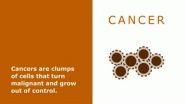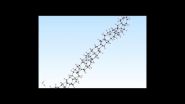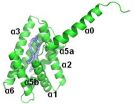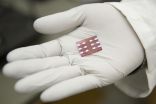(Press-News.org) Researchers at the University of Basel in Switzerland have succeeded in observing the "forbidden" infrared spectrum of a charged molecule for the first time. These extremely weak spectra offer perspectives for extremely precise measurements of molecular properties and may also contribute to the development of molecular clocks and quantum technology. The results were published in the scientific journal Nature Physics.
Spectroscopy, the study of the interaction between matter and light, is probably the most important method for investigating the properties of molecules. Molecules can only absorb light at well-defined wavelengths which correspond to the difference between two quantum-mechanical energy states. This is referred to as a spectroscopic transition. An analysis of the wavelengths and the intensity of the transitions provides information about the chemical structure and molecular motions, such as vibration or rotation.
In certain cases, however, the transition between two energy levels is not permitted. The transition is then called "forbidden". Nevertheless, this restriction is not categorical, meaning that forbidden transitions can still be observed with an extremely sensitive method of measurement. Although the corresponding spectra are extremely weak, they can be measured to an exceptionally accurate degree. They provide information on molecular properties with a level of precision not possible within allowed spectra.
Precise measurements of molecular properties
Within the framework of the National Centre of Competence in Research QSIT – Quantum Science and Technology, the research group headed by Professor Stefan Willitsch at the University of Basel's Department of Chemistry has established methods for the precise manipulation and control of molecules on the quantum level.
In the present study, individual charged nitrogen molecules (ions) were generated in a well-defined molecular energy state. The ions were then implanted into a structure of ultra-cold, laser-cooled calcium ions – a Coulomb crystal – in an ultra-high vacuum chamber. The molecular ions were thus cooled to a few thousandths of a degree above absolute zero to localize in space. In this isolated, cold environment, the molecules could be investigated without perturbations over long periods of time. This enabled the researchers to excite and observe forbidden transitions in the infrared spectral domain using an intensive laser.
Potential for new applications
The new method paves the way for new applications, such as the highly precise measurement of molecular properties, the development of extremely precise clocks based on individual molecules and quantum information processing using molecules. It also offers perspectives to test fundamental concepts using spectroscopic precision measurements on single molecules which were up to now the domain of high-energy physics. One example is the important question whether the physical constants of nature are actually really constant.
INFORMATION:
Original source
Matthias Germann, Xin Tong and Stefan Willitsch
Observation of electric-dipole-forbidden infrared transitions in cold molecular ions
Nature Physics, published online 21 September 2014 | doi: 10.1038/nphys3085
Uncovering the forbidden side of molecules
2014-09-21
ELSE PRESS RELEASES FROM THIS DATE:
Magnetic fields make the excitons go 'round
2014-09-21
CAMBRIDGE, Mass-- A major limitation in the performance of solar cells happens within the photovoltaic material itself: When photons strike the molecules of a solar cell, they transfer their energy, producing quasi-particles called excitons — an energized state of molecules. That energized state can hop from one molecule to the next until it's transferred to electrons in a wire, which can light up a bulb or turn a motor.
But as the excitons hop through the material, they are prone to getting stuck in minuscule defects, or traps — causing them to release their energy ...
Engineered proteins stick like glue -- even in water
2014-09-21
CAMBRIDGE, MA -- Shellfish such as mussels and barnacles secrete very sticky proteins that help them cling to rocks or ship hulls, even underwater. Inspired by these natural adhesives, a team of MIT engineers has designed new materials that could be used to repair ships or help heal wounds and surgical incisions.
To create their new waterproof adhesives, the MIT researchers engineered bacteria to produce a hybrid material that incorporates naturally sticky mussel proteins as well as a bacterial protein found in biofilms — slimy layers formed by bacteria growing on a surface. ...
Cancer cells adapt energy needs to spread illness to other organs
2014-09-21
Want to understand why cancer cells metastasize? Think of Sparta.
Ancient Greek warriors were fed a special diet that better prepared them for the demands of battle on distant fields. Cancer cells that metastasize may do the same thing according to a new study revealing previously unknown differences between cancer cells that continue to grow at the original tumor site, and those that travel to other organs.
Given that a cancer cell's unyielding ability to metastasize is the primary cause of cancer-related death, understanding how they successfully migrate can be lifesaving.
Scientists ...
Stanford researchers create 'evolved' protein that may stop cancer from spreading
2014-09-21
VIDEO:
Early but promising tests in lab mice suggest that a bioengineered 'decoy' protein, administered intravenously, can halt the spread of cancer from the original tumor site. Years of subsequent tests...
Click here for more information.
A team of Stanford researchers has developed a protein therapy that disrupts the process that causes cancer cells to break away from original tumor sites, travel through the blood stream and start aggressive new growths elsewhere in the body.
This ...
Smallest possible diamonds form ultra-thin nanothreads
2014-09-21
VIDEO:
For the first time, scientists have discovered how to produce ultra-thin 'diamond nanothreads' that promise extraordinary properties, including strength and stiffness greater than that of today's strongest nanotubes and polymers....
Click here for more information.
For the first time, scientists have discovered how to produce ultra-thin "diamond nanothreads" that promise extraordinary properties, including strength and stiffness greater than that of today's strongest ...
New cancer drug target involving lipid chemical messengers
2014-09-19
PHILADELPHIA — More than half of human cancers have abnormally upregulated chemical signals related to lipid metabolism, yet how these signals are controlled during tumor formation is not fully understood.
Youhai Chen, PhD, MD, and Svetlana Fayngerts, PhD, both researchers in the department of Pathology and Laboratory Medicine at the Perelman School of Medicine, University of Pennsylvania, and colleagues report that TIPE3, a newly described oncogenic protein, promotes cancer by targeting these pathways.
Lipid second messengers play cardinal roles in relaying and amplifying ...
Melanoma risk found to have genetic determinant
2014-09-19
(Lebanon, NH 9/18/14)— A leading Dartmouth researcher, working with The Melanoma Genetics Consortium, GenoMEL, an international research consortium, co-authored a paper published today in the Journal of the National Cancer Institute that proves longer telomeres increase the risk of melanoma.
"For the first time, we have established that the genes controlling the length of these telomeres play a part in the risk of developing melanoma," said lead author of the study Mark Iles, PhD, School of Medicine at the University of Leeds (UK).
Telomeres are a part of the genome ...
UChicago-Argonne National Lab team improves solar-cell efficiency
2014-09-19
New light has been shed on solar power generation using devices made with polymers, thanks to a collaboration between scientists in the University of Chicago's chemistry department, the Institute for Molecular Engineering, and Argonne National Laboratory.
Researchers identified a new polymer — a type of large molecule that forms plastics and other familiar materials — which improved the efficiency of solar cells. The group also determined the method by which the polymer improved the cells' efficiency. The polymer allowed electrical charges to move more easily throughout ...
Research predicts possible 6,800 new Ebola cases this month
2014-09-19
Tempe, Ariz. (Sept. 19, 2014) - New research published today in the online journal PLoS Outbreaks predicts new Ebola cases could reach 6,800 in West Africa by the end of the month if new control measures are not enacted.
Arizona State University and Harvard University researchers also discovered through modelling analysis that the rate of rise in cases significantly increased in August in Liberia and Guinea, around the time that a mass quarantine was put in place, indicating that the mass quarantine efforts may have made the outbreak worse than it would have been otherwise. ...
Domestic violence likely more frequent for same-sex couples
2014-09-19
CHICAGO --- Domestic violence occurs at least as frequently, and likely even more so, between same-sex couples compared to opposite-sex couples, according to a review of literature by Northwestern Medicine scientists.
Previous studies, when analyzed together, indicate that domestic violence affects 25 percent to 75 percent of lesbian, gay and bisexual individuals. However, a lack of representative data and underreporting of abuse paints an incomplete picture of the true landscape, suggesting even higher rates. An estimated one in four heterosexual women experience domestic ...





